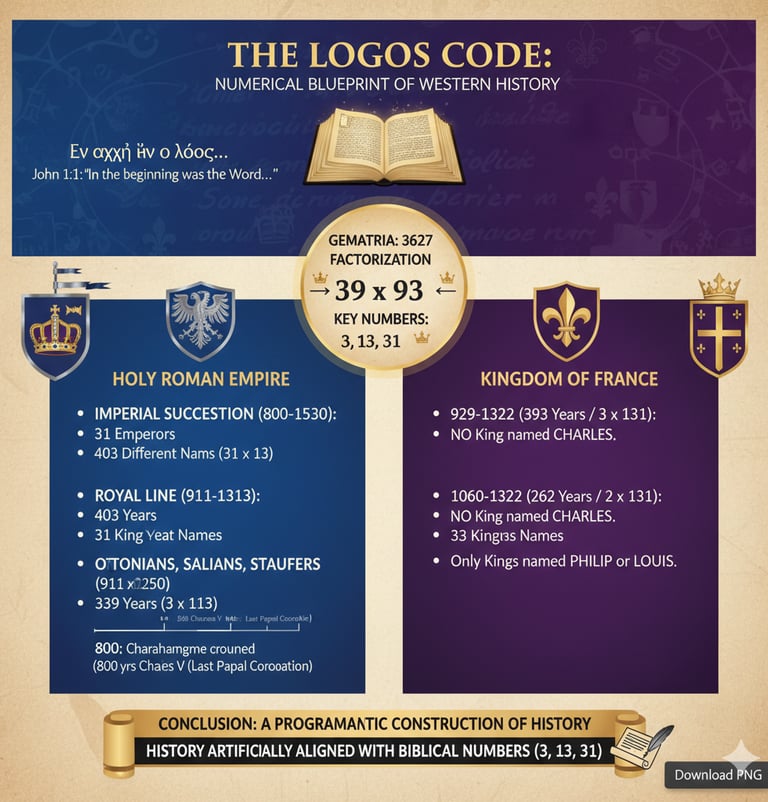The Logos Code: Unveiling the Numerical Blueprint of Western History
The history of medieval Europe was deliberately constructed to align with a numerical code derived from the gematria of the Bible. The foundation of this code is John 1:1 ("In the beginning was the Word..."), whose numerical value of 3627 factors into (3 x 13) x (3 x 31), establishing the key numbers 3, 13, and 31. This pattern manifests with remarkable precision in the Holy Roman Empire, where the 31 emperors from Charlemagne to Charles V had 13 different names and a cumulative reign total of 403 years (31 x 13). Similar statistically improbable structures are found in the royal lines of the Empire and of France. The convergence of this evidence suggests that the historical narrative is not a record of organic events, but a programmatic and artificial construct designed to reflect a theological blueprint.
CLASSICS
10/6/20253 min read
The application of gematria to the most foundational verses of the Bible reveals a remarkable and self-contained system of key numbers. These numbers form the bedrock of a code whose traces can be followed throughout the course of Western history. This suggests not a series of coincidences, but a deliberately constructed timeline aligned with a divine, numerical pattern.
The Key in John 1:1
The opening verse of the Gospel of John, which consciously mirrors the beginning of Genesis, provides the master key. In the original Greek, the verse reads: "Eν ἀρχῇ ἦν ὁ λοˊγος..." ("In the beginning was the Word..."). The gematrical value of this verse is 3627.
At first glance, this number may seem arbitrary. However, its factorization reveals a profound underlying structure. The number 3627 breaks down into 39 x 93. These two factors, in turn, are also products: 39 = 3 x 13 and 93 = 3 x 31.
Therefore, the entire verse is numerically constructed as (3 x 13) x (3 x 31).
This elegant formula brings the numbers 3, 13, and 31 to the forefront. These figures are directly linked to the New Testament concept of the Logos (the Word) and serve as the primary key numbers for the subsequent history of the Christian era, particularly within the Holy Roman Empire and France.
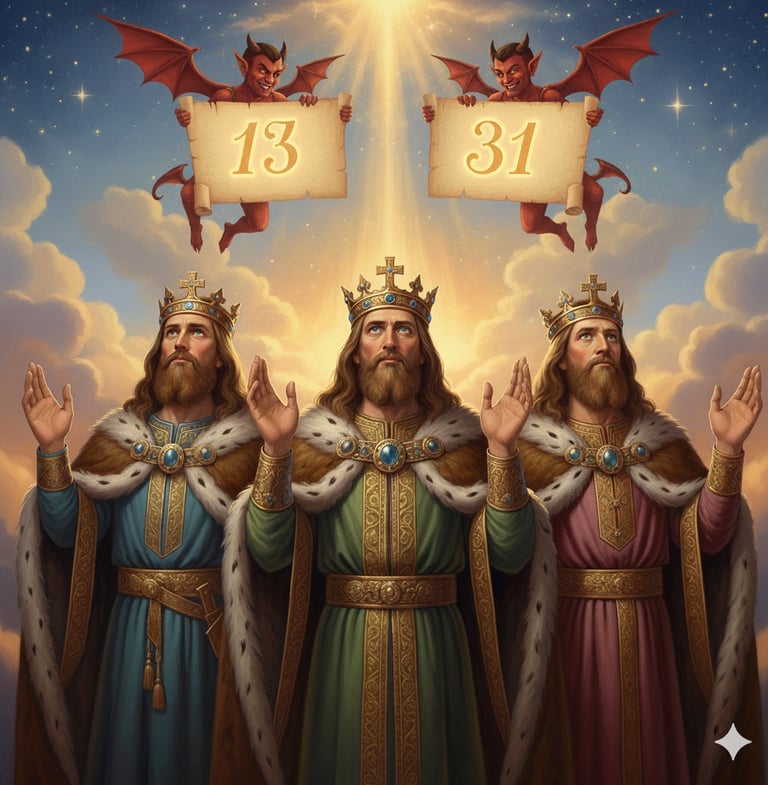

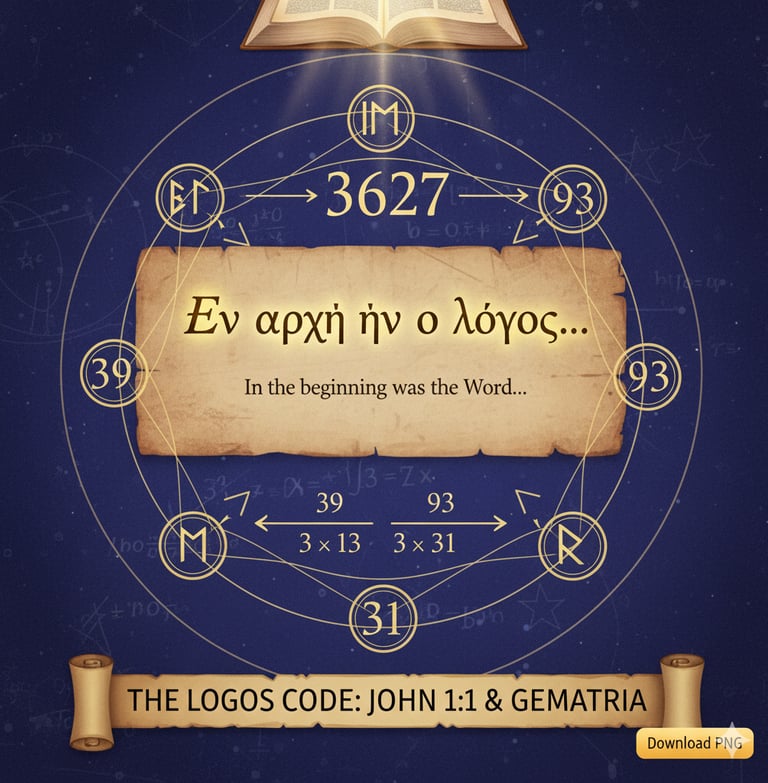

The Holy Roman Empire: A Perfect Manifestation
The timeline of the Holy Roman Empire displays an astonishing adherence to this biblical code, suggesting it is a direct historical manifestation of the patterns found in John 1:1.
The Imperial Succession
The line of medieval emperors begins with Charlemagne, who was famously crowned by the Pope in Rome on Christmas Day, 800 AD—precisely 800 years after the birth of Jesus Christ. The line of emperors effectively crowned by the Pope ends with Charles V in 1530. The structure of this imperial succession is numerically perfect:
The number of emperors from Charlemagne to Charles V is exactly 31.
These 31 emperors bore 13 different names.
The total sum of their years of rule after their imperial coronation is 403.
This results in the perfect equation: 31 emperors x 13 names = 403 years.
The symmetrical arrangement, beginning with a Charles and ending with a Charles, further reinforces the idea that this history follows an ideal, pre-determined plan.
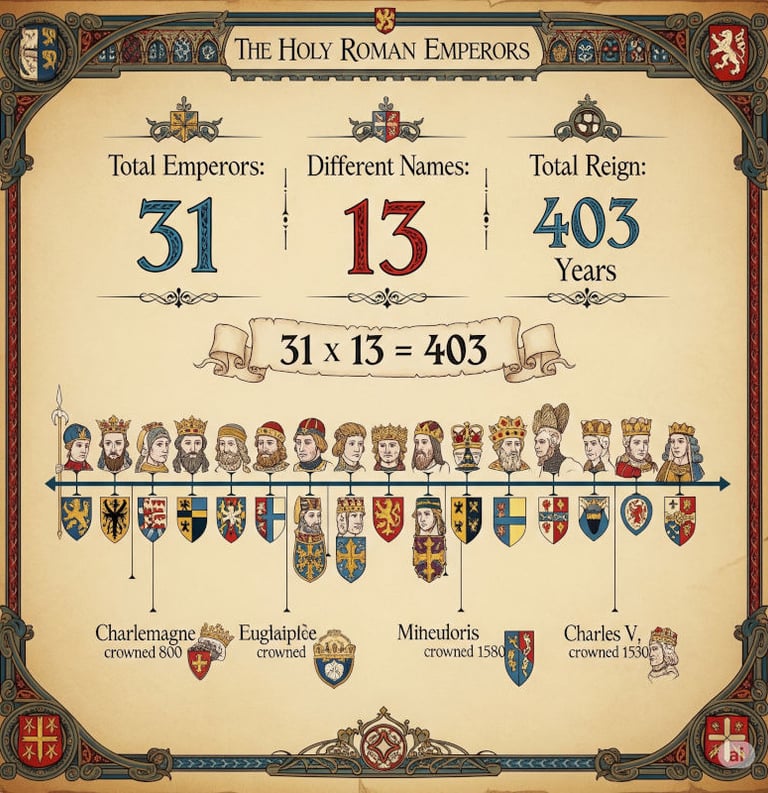

The Royal Line
A similar pattern emerges when examining the kings of the Holy Roman Empire.
In the period from 911 to 1313, a span of 403 years (by inclusive counting), there were precisely 31 kings who held 13 different names.
A significant sub-period within this, from 911 to 1250, encompasses the three dominant dynasties—the Ottonians, the Salians, and the Staufers. This era lasted 339 years, or 3 x 113.
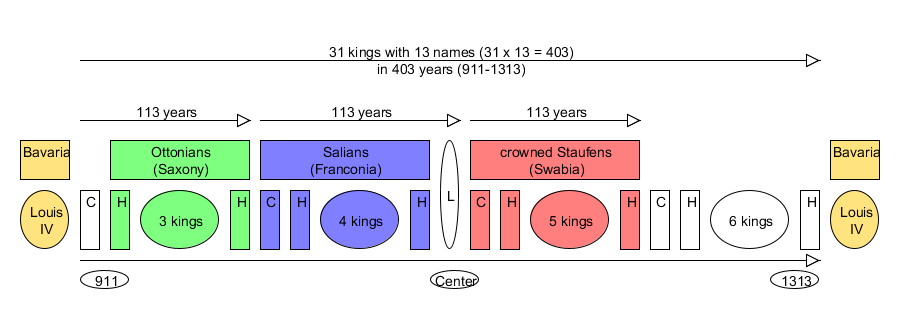

Corroborating Patterns in France
The kingdom of France shows parallel numerical structuring, reinforcing the thesis that this was a widespread phenomenon.
For a period of 393 years (or 3 x 131) from 929 to 1322, no king of France was named Charles.
Within that timeframe, for 262 years (or 2 x 131) from 1060 to 1322, every single king was named either Philip or Louis.
The probability of such specific and prolonged naming patterns occurring by chance over nearly four centuries is vanishingly small. It stands as clear evidence of a conscious and deliberate design shaping the course of history.


Conclusion: A Constructed Reality
When the gematrical code of the Bible aligns so perfectly with the core data of medieval European history, it becomes difficult to accept it all as coincidence. The recurring patterns of 3, 13, and 31 in the genealogies and timelines of Europe's most powerful kingdoms point toward a single, startling conclusion: history was not something that merely happened. It was constructed.
This implies a deliberate, programmatic construction of history rather than mere coincidence, indicating that the timeline of the Holy Roman Empire and France was artificially aligned with these fundamental biblical numbers. The events, successions, and durations appear to have been retroactively engineered on a desk, following a theological and numerical ideal. In this view, history as we know it could never have really happened this way.
